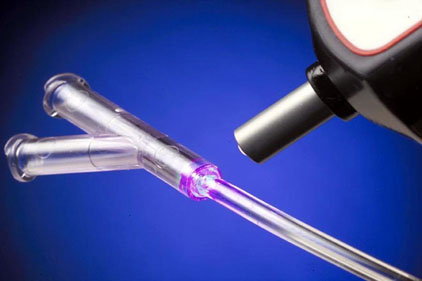Traditionally, hearing aids, pacemakers, defibrillators, cochlear implants, neurostimulators and other medical devices depend on lithium-ion batteries. However, batteries add extra weight.
Batteries also raise numerous safety and reliability concerns. In addition, they pose a big challenge to medical engineers as they attempt to design and package increasingly smaller devices.
Medtronic Inc., one of the largest medical device manufacturers in the world, recently found out the hard way why batteries can cause headaches. Patients encountered “reduced battery performance” with its implantable drug infusion pumps. Several years ago, Medtronic’s implantable cardioverter-defibrillators suffered from premature battery depletion.
Energy harvesting technology promises to eliminate the need for bulky batteries and the risk of battery-related defects. Engineers are attempting to capture unused power generated by everyday human activity, such as walking or breathing.
“Energy harvesting is becoming an increasingly viable source of power for a variety of devices, especially where the environmental and economic costs of maintaining batteries is untenable,” says Bob Gohn vice president of Pike Research. “Consumer products such as laptops and mobile phones are already being powered by energy harvesting technology.” Gohn believes medical device will be the next market to capitalize on the benefits of energy harvesting.
“In many of these applications, maintaining batteries is a major logistical and cost issue,” Gohn points out. “Viable energy harvesting technology exists today and developers are fast becoming familiar with how to implement it into ever more-innovative devices.”
Several recent efforts focusing on energy harvesting promise to address these issues by eliminating the need for batteries in implantable medical devices. Most R&D activity has focused on pacemakers.
For instance, engineers at the University of Michigan recently designed a device that harvests energy from the reverberation of heartbeats through the chest and converts it to electricity to run a pacemaker or an implanted defibrillator. It sends electrical signals to the heart to keep it beating in a healthy rhythm.
“The idea is to use ambient vibrations that are typically wasted and convert them to electrical energy,” says Daniel Inman, chairman of the Department of Aerospace Engineering. “If you put your hand on top of your heart, you can feel these vibrations all over your torso.”
Inman and his colleagues originally designed the energy harvester for use in light unmanned airplanes, where it could generate power from wing vibrations. They engineered the ceramic layer to a shape that can harvest vibrations across a broad range of frequencies. They also incorporated magnets, whose additional force field can drastically boost the electric signal that results from the vibrations.
The new device could generate 10 microwatts of power, which is about eight times the amount a pacemaker needs to operate. “It always generates more energy than the pacemaker requires, and it performs at heart rates from seven to 700 beats per minute,” says Inman. “That’s well below and above the normal range.
By taking the place of the batteries that power them today, the new energy harvester could save patients from repeated surgeries. “Currently operations must be scheduled about every seven to 10 years to replace the battery,” Inman points out. “If our system works, it will negate the need for such operations.”
The researchers haven't built a prototype yet, but they've made detailed blueprints and run simulations demonstrating that the concept would work.
According to Inman, a hundredth-of-an-inch thin slice of a piezoelectric ceramic material would catch heartbeat vibrations and briefly expand in response.
“Piezoelectric materials can convert mechanical stress (which causes them to expand) into an electric voltage,” he explains.
The device is not close to commercialization because “we have to go through animal tests, human certification and solve manufacturing issues yet,” notes Inman.
However, he expects to see energy harvesting applied to other types of medical devices, wherever electrical power is needed inside the body to run monitoring devices.
Some devices, such as an internal defibrillator, would be more challenging, because it takes a large charge. “But, we are thinking about it,” adds Inman.
Energy Harvesting Could Change Medical Device Assembly

